|
McCloud River Lumber Company:
Tractor Logging |
|
|
|
Best, Holt, and several other manufacturers released the first gasoline powered tractors in the years immediately after 1900. A logger named M.G. Ashley is
credited with being the first to employ tractors in the logging industry in his operations outside Cle Elum, Washington, in 1912. The technology rapidly improved over the next decade. In
1925 the C.L. Best and Holt tractor companies merged to form the Caterpillar Tractor Company; both parent companies had made sixty horsepower tractors prior to the merger, and the Caterpillar
"Sixty" tractor immediately became the gold standard in the logging industry, though other companies, such as the Cleveland Tractor Company (marketed under the name Cletrac) also produced
tractors for logging. Early tractors either dragged logs directly on the ground or pulled high wheels, both of which quickly gave way to new steel arches specifically directed for logging use. The neighboring Red River Lumber Company had been an early convert to tractor logging, and around 1926 the McCloud River Lumber Company sent representatives south to view tractors. The McCloud company liked what it saw and owned nine tractors by the end of 1927, increased to eighteen by the end of the following year, and thirty by 1950. For the first decade or two McCloud limited its tractors to skidding logs within a 1,500 foot radius of the railroad landing, though distances gradually increased to a mile or more by the 1950s. The company figured its initial tractor logging costs at $2.56 per thousand board feet logged, broken down to eighty-three cents for cutting, fifty-eight cents in labor, sixty-five cents for repairs and supplies, thirty cents for loading, and twenty cents for depreciation. The tractor manufacturers replaced the gas powered machines with diesel models by the mid-1930s. Tractors and arches performed much of the logging until replaced by rubber tired skidders. |
|
|
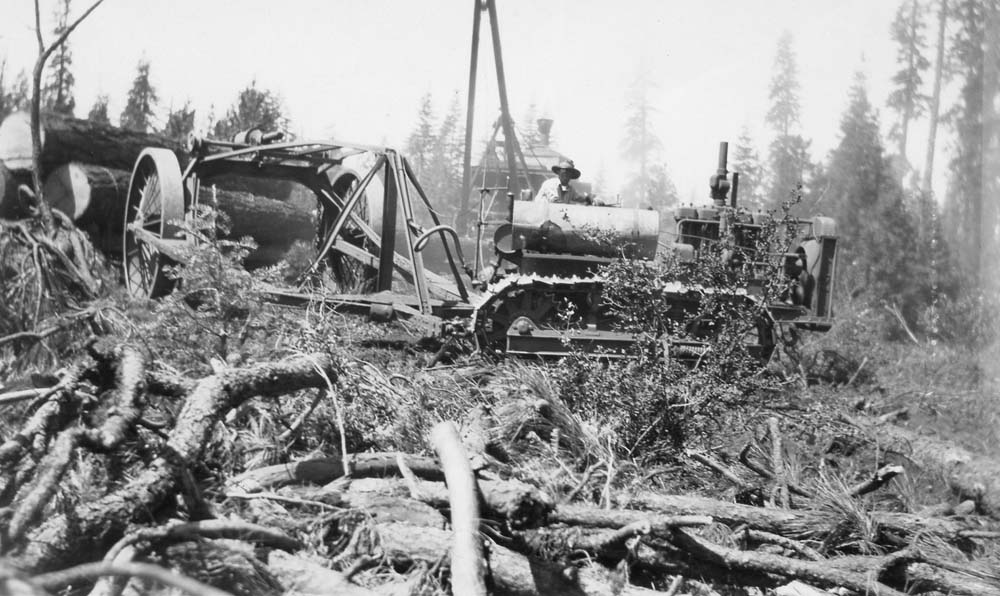 |
|
An early shot of a Caterpillar Sixty at work in the woods. The logging arch behind the tractor was one of the first types developed for use with tractors, but they did not last long
in the woods as the industry quickly determined they inflicted unacceptable levels of damage to both forest soils and tree saplings. Roland Edwards collection, courtesy Marilyn Rountree.
|
|
|
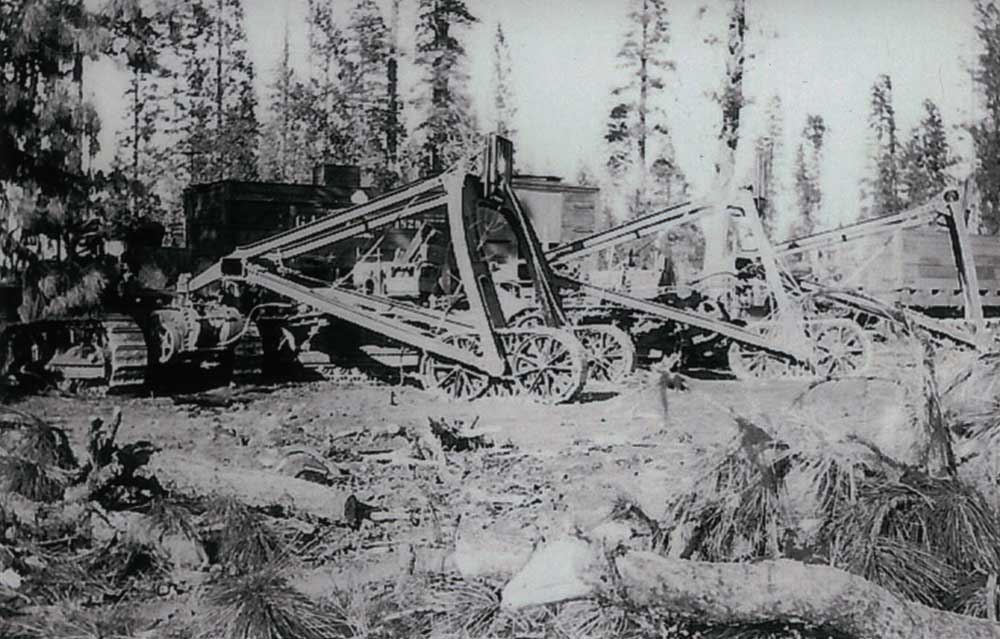 |
|
The industry worked hard on developing new types of arches to reduce environmental damage. Several examples of an early replacement model are seen here; the large wheels have been replaced with
tracks, and cables run from large winches on the back of the tractor through fairlead wheels on the top of the arch served to lift the leading end of the logs off the ground while in motion. The cats are
nosed up to one of the gasoline cars the railroad built to fuel the tractors. Dennis Sullivan collection.
|
|
|
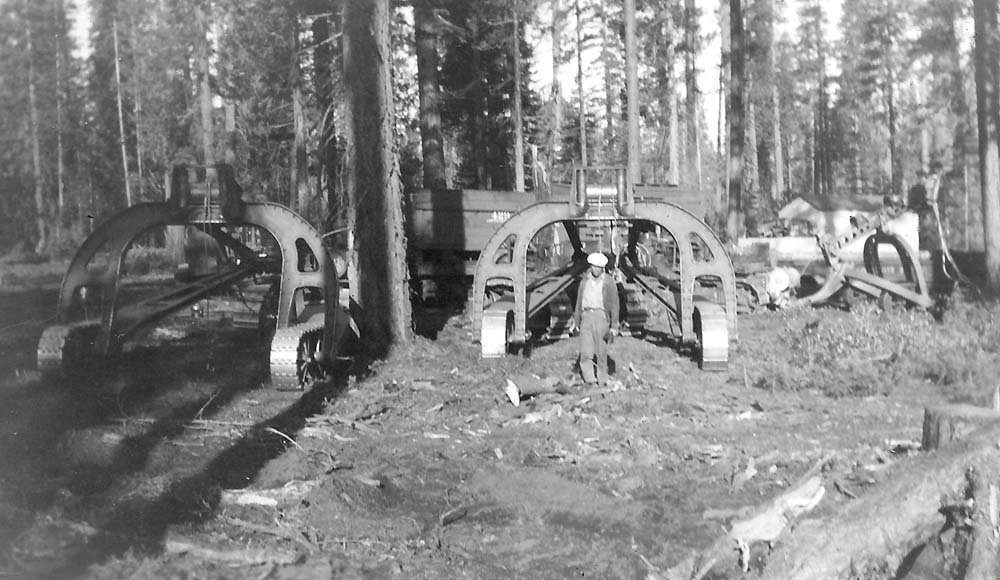 |
|
A rear view of the new arches. Roland Edwards collection, courtesy Marilyn Rountree.
|
|
|
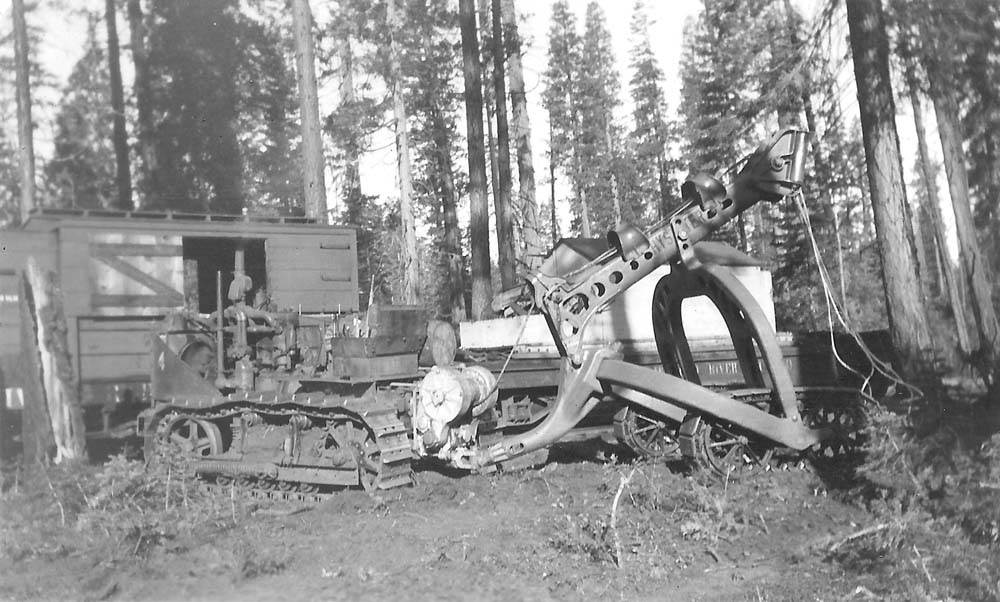 |
|
The final and most successful version of the logging arch developed for use in the industry. Roland Edwards collection, courtesy Marilyn Rountree.
|
|
|
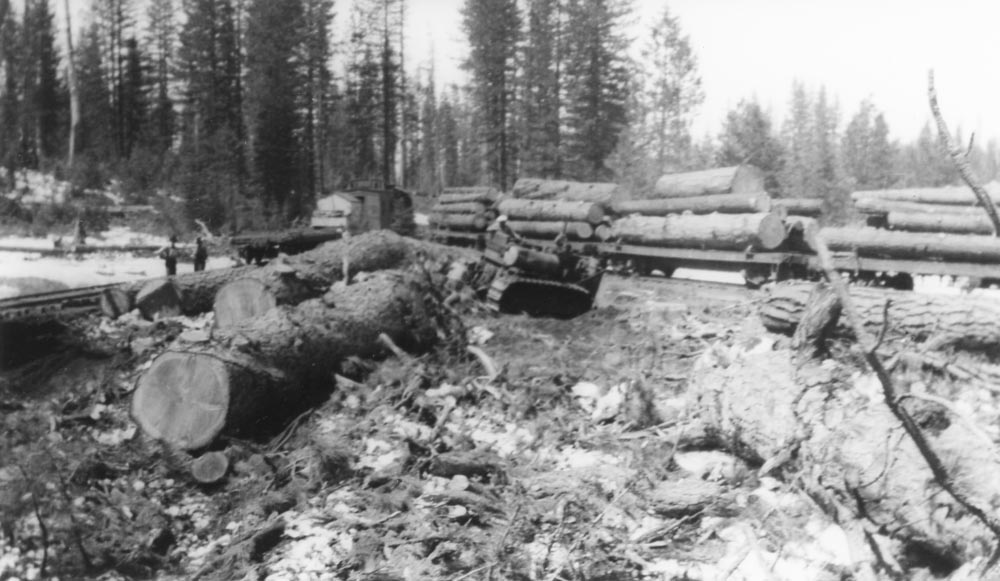 |
|
A Sixty at work at a landing out of White Horse about 1934. Roland Edwards collection, courtesy Marilyn Rountree.
|
|
|
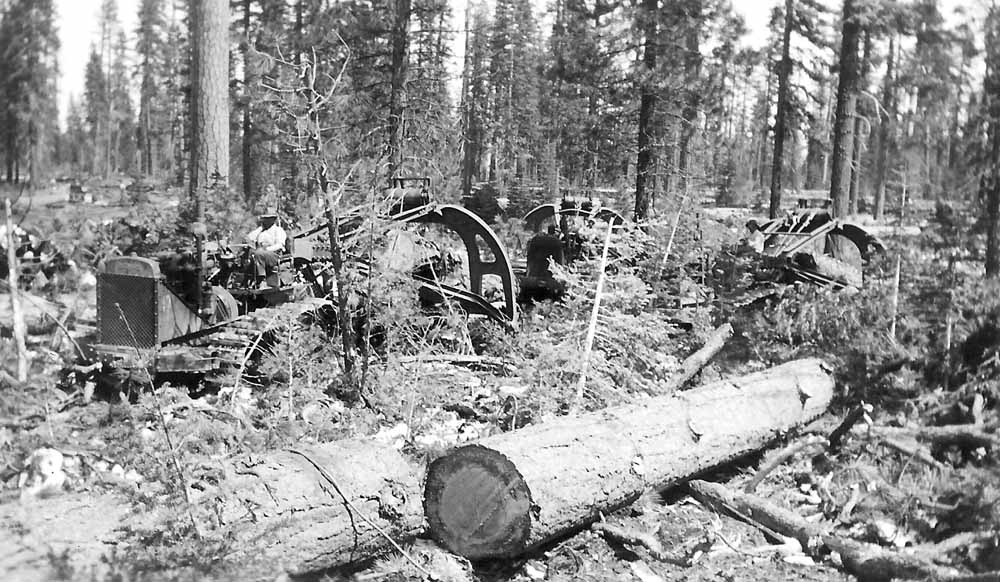 |
|
Sixties and arches in an active logging area. Roland Edwards collection, courtesy Marilyn Rountree.
|
|
|
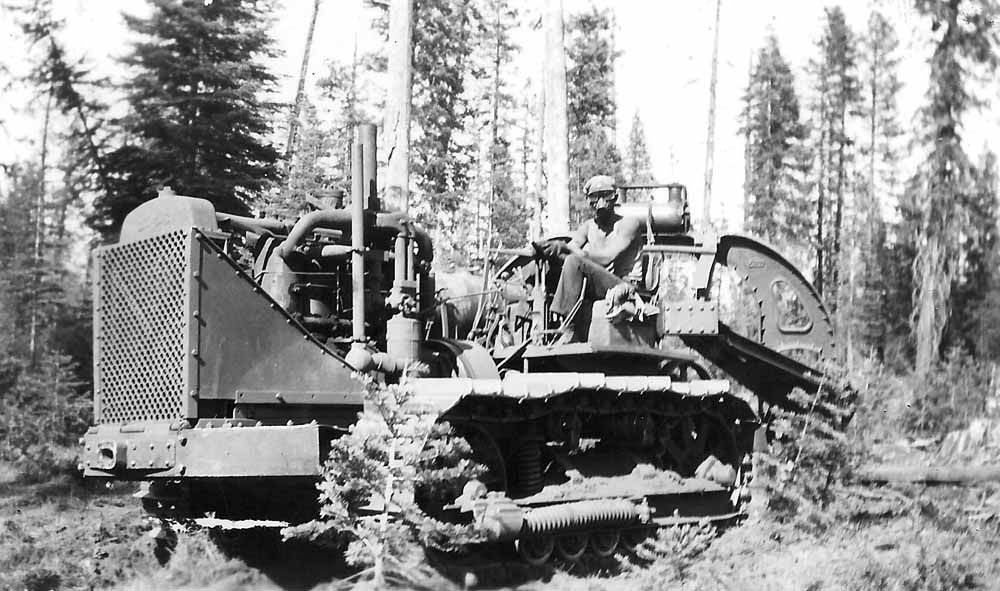 |
|
Tractor logging created an entirely new set of jobs in the woods, including the tractor operator, often known simply as a "Cat Skinner". One such operator is seen here at work on his machine,
wearing a mask and goggles to keep the dust ever present in logging operations out of his nose and mouth. Roland Edwards collection, courtesy Marilyn Rountree.
|
|
|
 |
|
A line of Sixties and their arches waiting their turn to drop their logs at a landing. Roland Edwards collection, courtesy Marilyn Rountree.
|
|
|
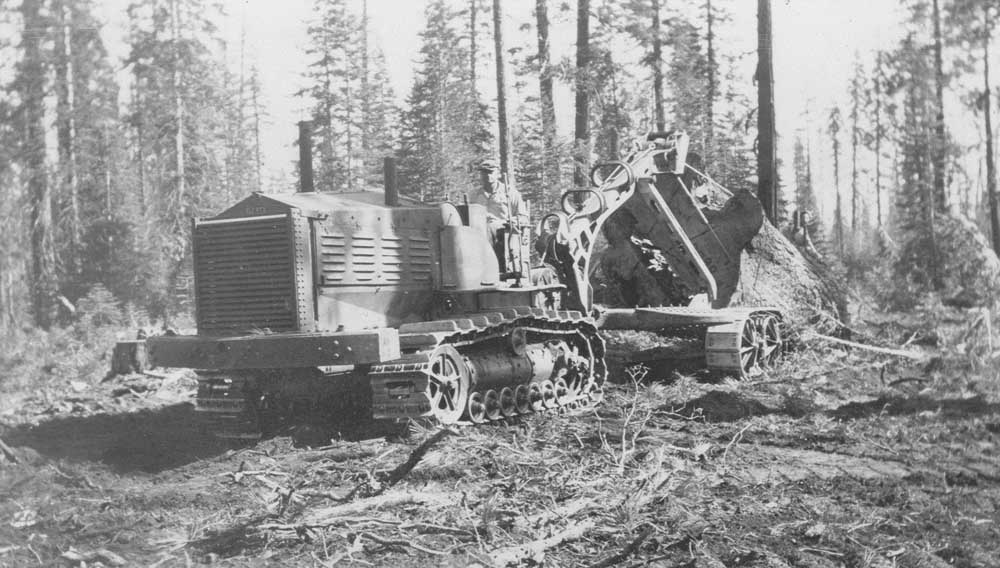 |
|
The lumber company's first diesel tractor was a "Cletrac" from the Cleveland Tractor Company. Scott Dowell collection.
|
|
|
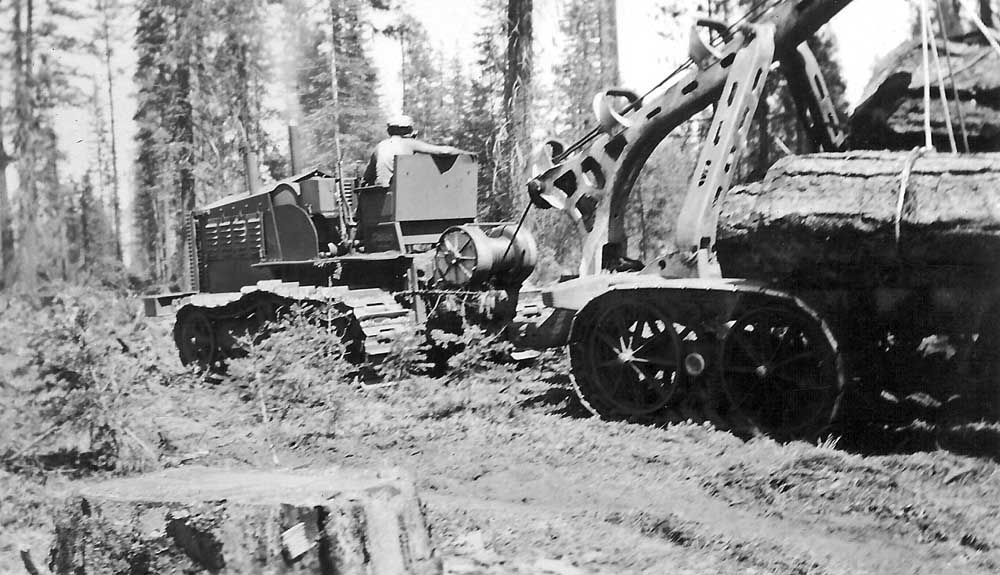 |
|
A going away shot of the Cletrac diesel. Roland Edwards collection, courtesy Marilyn Rountree.
|
|
|
 |
|
Roland Edwards himself, the source for most of the photos on this page, is seen here servicing his tractor about 1938. Roland Edwards collection, courtesy Marilyn Rountree.
|
|
|
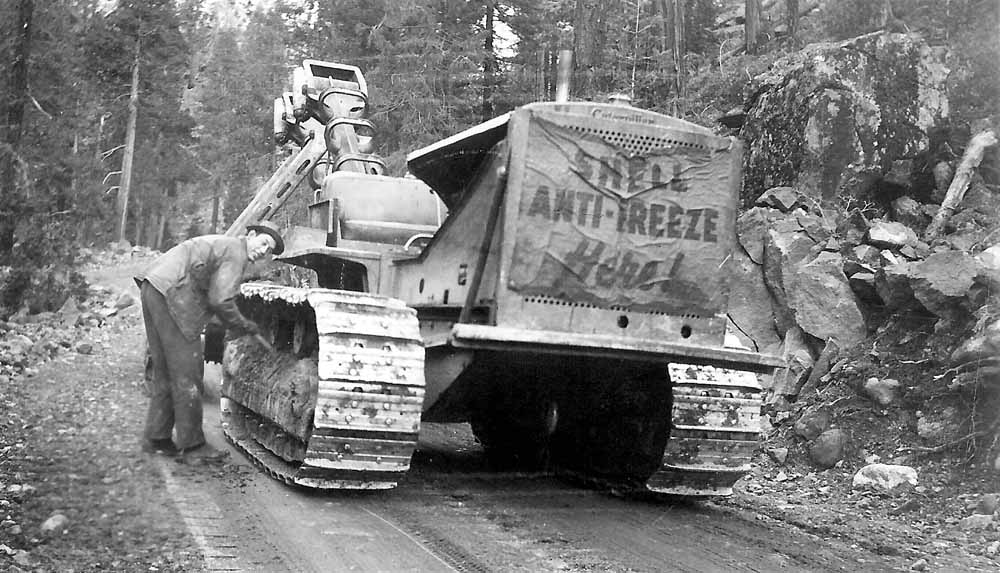 |
|
A cat skinner and choker setter pose with an impressive load in the woods. The tractor is one of Caterpillar's early diesel powered models. Roland Edwards collection, courtesy Marilyn Rountree.
|
|
|
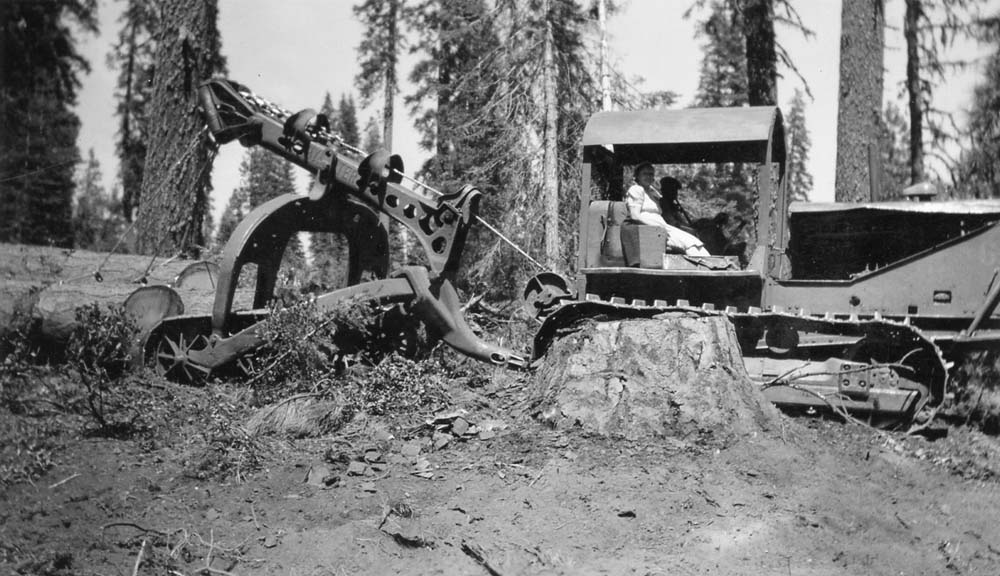 |
|
A later Caterpillar diesel cat bringing another load of logs into the railhead. The logger appears to have brought his wife along with him this day. Jeff Moore collection.
|
|
|
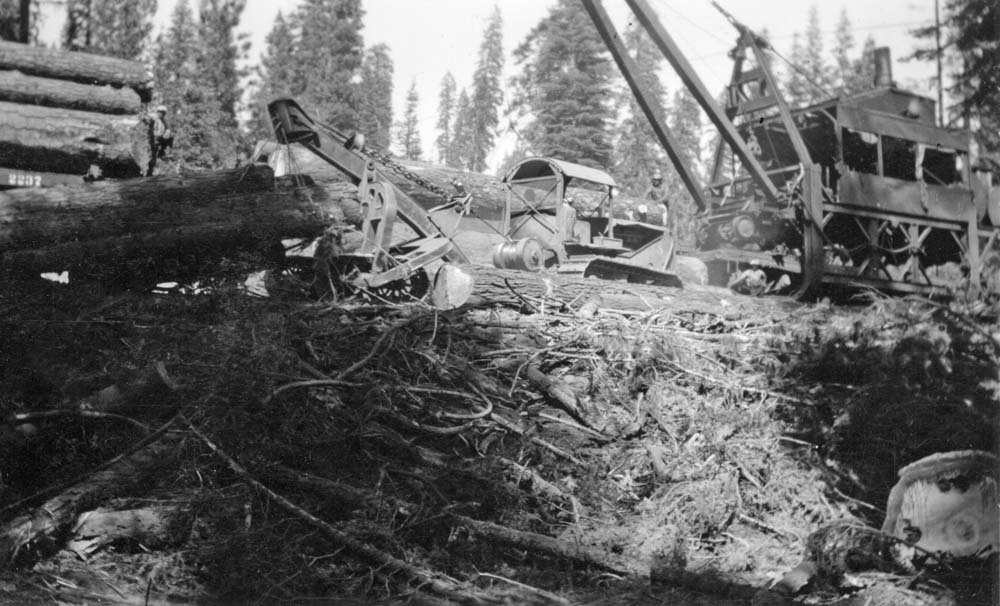 |
|
Another later diesel Cat preparing to drop its load of logs next to a McGiffert loader. Jeff Moore collection.
|
|
|
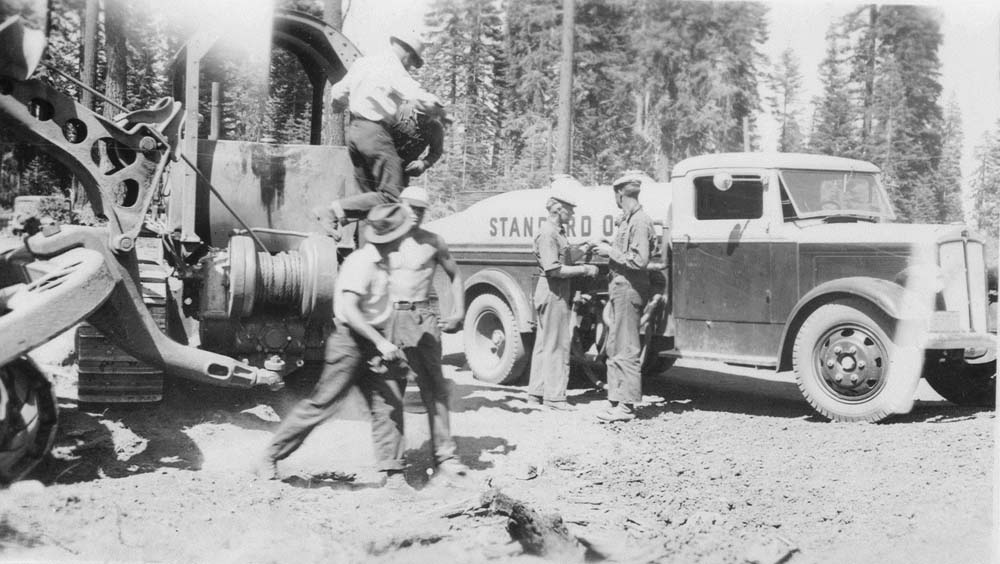 |
|
A diesel cat parked next to a fuel truck somewhere in the McCloud woods. Heritage Junction Museum.
|
|
|